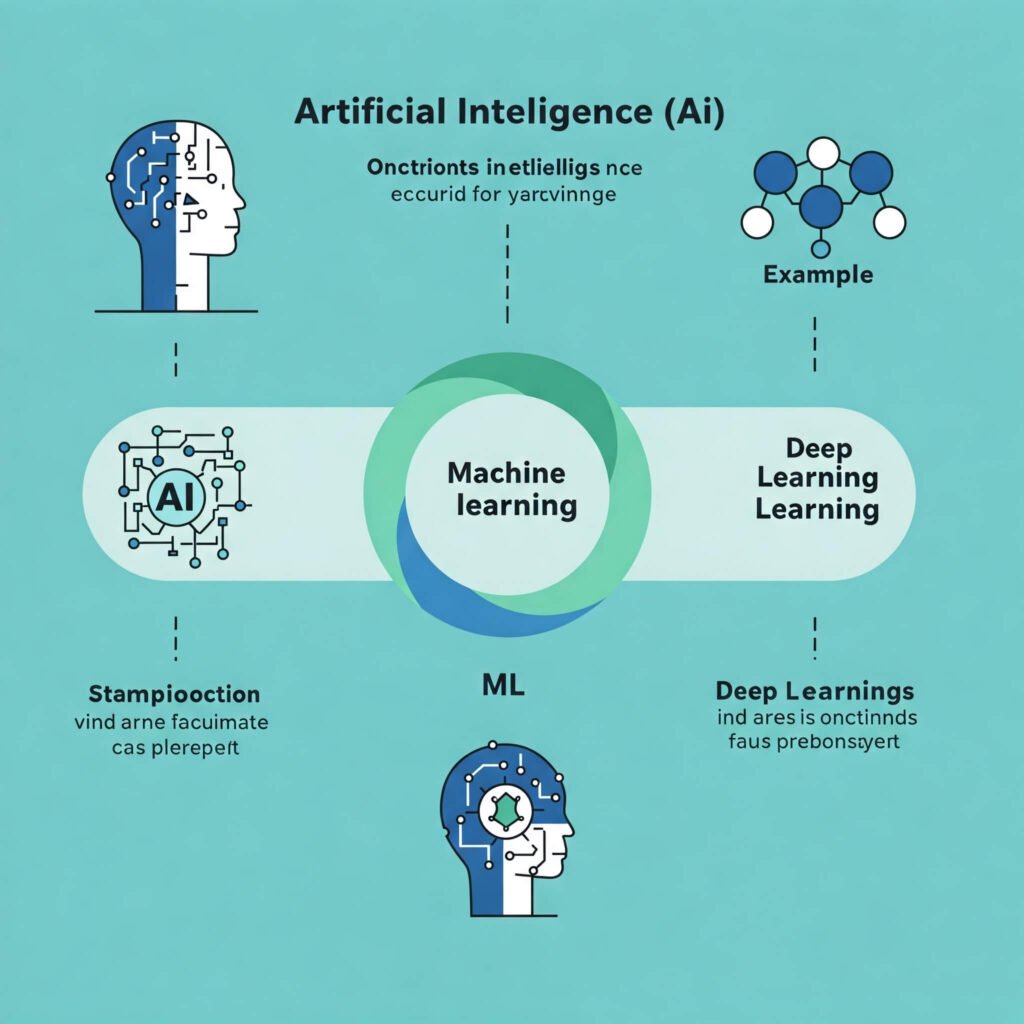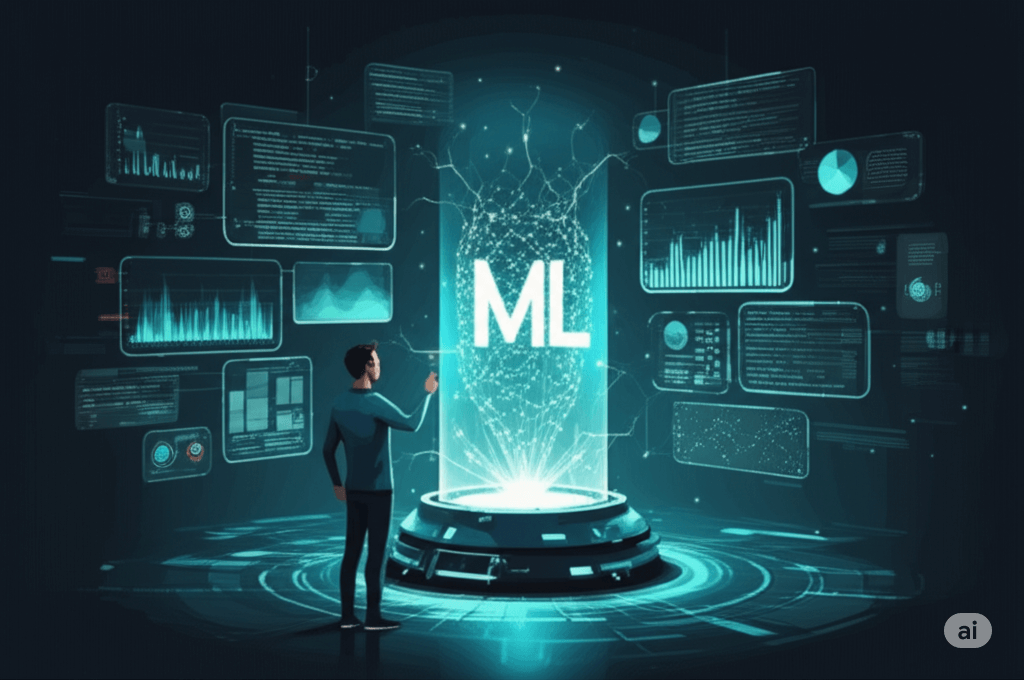Machine learning for beginners can feel like stepping into a sci-fi movie, but it’s more accessible than you think! Machine learning (ML) powers everything from Netflix recommendations to self-driving cars, and you don’t need a PhD to get started. This guide breaks down the essentials of ML, offering clear explanations, real-world examples, and actionable steps to kickstart your journey. Whether you’re a curious newbie or an aspiring data scientist, this is the only guide you need to understand and explore machine learning.
What Is Machine Learning for Beginners?
Machine learning is a subset of artificial intelligence (AI) where computers learn from data to make predictions or decisions without being explicitly programmed. Think of it as teaching a computer to recognize patterns, like how a child learns to identify animals by seeing examples.
Why Should Beginners Care About Machine Learning?
ML is transforming industries, and learning it opens doors to exciting careers. Here’s why machine learning for beginners matters:
- High Demand: Data scientists and ML engineers are among the top-paying roles in tech (BLS, 2023).
- Real-World Impact: From healthcare diagnostics to personalized ads, ML is everywhere.
- Accessible Tools: Free platforms like Python and TensorFlow make ML approachable for beginners.

How Does Machine Learning Work for Beginners?
At its core, machine learning for beginners boils down to three components: data, algorithms, and models. Here’s a simple breakdown:
- Data: The raw material (e.g., customer purchase history or images).
- Algorithm: The recipe that processes data (e.g., decision trees, neural networks).
- Model: The trained output that makes predictions (e.g., recommending products).
Types of Machine Learning for Beginners to Know
Understanding the types of ML is crucial for beginners. Here are the main categories:
- Supervised Learning: Uses labeled data to predict outcomes (e.g., spam email detection).
- Unsupervised Learning: Finds patterns in unlabeled data (e.g., customer segmentation).
- Reinforcement Learning: Learns through trial and error (e.g., game-playing AI).
Example: Netflix uses supervised learning to predict what you’ll watch next based on your viewing history, while unsupervised learning groups similar users for better recommendations.
Getting Started with Machine Learning for Beginners
Ready to dive into machine learning for beginners? Follow these actionable steps to build a strong foundation.
Step 1: Learn the Basics of Python
Python is the go-to language for ML due to its simplicity and powerful libraries. Start with:
- Free Resources: Codecademy’s Python Course or Google’s Python Class.
- Key Libraries: Learn scikit-learn for basic ML and TensorFlow for advanced models.
Step 2: Understand Key Machine Learning Concepts
Focus on these beginner-friendly concepts:
- Data Preprocessing: Cleaning and preparing data for analysis.
- Training vs. Testing: Splitting data to train and evaluate models.
- Overfitting: When a model learns too much from training data and fails on new data.
Step 3: Build Your First Machine Learning Project
Start small with a project like predicting house prices using scikit-learn. Here’s a quick roadmap:
- Choose a Dataset: Use free datasets from Kaggle.
- Preprocess Data: Handle missing values and normalize data.
- Train a Model: Use a simple algorithm like linear regression.
- Evaluate: Check accuracy with metrics like mean squared error.

Top Tools for Machine Learning Beginners
Machine learning for beginners is easier with the right tools. Here are the best ones to explore:
- Python: The backbone of ML with libraries like scikit-learn and Pandas.
- TensorFlow: Google’s open-source platform for building neural networks.
- Jupyter Notebook: An interactive environment for coding and visualizing data.
- Google Colab: A free, cloud-based platform for running ML experiments.
Pro Tip: Start with Google Colab to avoid setup hassles and experiment with free GPU access.
Real-World Applications of Machine Learning for Beginners
Machine learning isn’t just theory—it’s powering the world around us. Here are examples beginners can relate to:
- Healthcare: ML predicts diseases like diabetes using patient data.
- E-Commerce: Amazon’s recommendation engine drives 35% of its sales (McKinsey, 2022).
- Entertainment: Spotify’s Discover Weekly uses ML to curate playlists.

Common Challenges in Machine Learning for Beginners
Machine learning for beginner comes with hurdles. Here’s how to overcome them:
- Challenge: Overwhelming math (e.g., linear algebra, statistics).
Solution: Focus on practical coding first; learn math as needed with resources like Khan Academy. - Challenge: Poor data quality.
Solution: Spend time cleaning data—80% of ML work is data prep! - Challenge: Choosing the right algorithm.
Solution: Start with simple algorithms like linear regression before exploring complex ones like deep learning.
Tips to Excel in Machine Learning for Beginners
Want to stand out? Here are actionable tips for mastering machine learning as a beginner:
- Practice Daily: Code small projects to build muscle memory.
- Join Communities: Engage on Reddit’s r/learnmachinelearning or Kaggle’s forums.
- Stay Curious: Experiment with new datasets and algorithms.
- Learn from Mistakes: Debugging errors teaches you more than perfect code.
Conclusion: Your Machine Learning Journey Starts Now
Machine learning for beginner is an exciting adventure that blends creativity, coding, and problem-solving. By starting with Python, exploring tools like TensorFlow, and building simple projects, you’ll be amazed at how quickly you progress. The key is to stay curious, practice consistently, and embrace challenges as learning opportunities.































